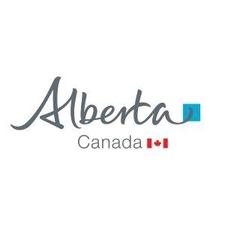Regional
Type of resources
Available actions
Topics
Keywords
Contact for the resource
Provided by
Years
Formats
Representation types
Update frequencies
status
Service types
Scale
Resolution
-
Kartan återger huvuddragen i regionens jordartsgeologi. Kartan är avsedd för presentation i skalområdet 1:750 000 – 1:1 miljon. Kartbilden är mycket generaliserad och jordartsindelningen förenklad. Minsta redovisade yta är knappt 1 km2.
-
Kartan ger en mycket översiktlig bild av jordartsförhållandena inom de delar av Västernorrlands län där SGU saknar mer detaljerad jordartsinformation. Den kommer successivt att ersättas med jordartskartor i skalområdet 1:25 000 till 1:100 000. Kartan bör användas med stor försiktighet vid analyser och bedömningar av markförhållanden.
-
Visningstjänsten ”Sur sulfatjord” visar var det kan finnas sura sulfatjordar längs Västernorrlands, Västerbottens och Norrbottens kust. Informationen kan användas för att identifiera områden där det är viktigt att undvika markanvändning som kan leda till negativ påverkan från sur sulfatjord eller där det är lämpligt att vidta åtgärder för att minska miljöbelastning från jordarna. ”Sur sulfatjord” består av en yttäckande modellering och insamlade punktobservationer av sur sulfatjord. Den modellerade kartan visar den sannolika utbredningen av sur sulfatjord. Punktobservationerna kommer från kartering och provtagning av sur sulfatjord som utförts inom olika projekt på SGU. Klasserna i den yttäckande modellen är ”Ej sur sulfatjord”, ”Aktiv sur sulfatjord på potentiell sur sulfatjord” och ”Potentiell sur sulfatjord”.
-
Kartan Jordarter 1:250 000 nordligaste Sverige täcker nordligaste delen av Sverige och ger en mycket översiktlig bild av jordarternas fördelning och landformer. Kartan kan användas som ett mycket översiktligt planerings- och resurshushållningsunderlag för prospekteringsföretag, länsstyrelse, kommuner m.fl. intressenter. Kartbilden är generaliserad för presentation i skala 1:250 000 och minsta redovisade yta är ca 0,1 km2.
-
Datamängden SR.Havsbottenyttäcke 1:25 000 visas i denna OGC WMS-tjänst.
-

This ArcGIS Online application displays the hydrometric stations and accompanying drainage areas analyzed as part of Bulletin 2020-1-RFFA described below. A frequency analysis was conducted on Annual Maximum Series (AMS) streamflow data collected at Water Survey of Canada (WSC) and United States Geological Survey (USGS) hydrometric gauge stations that met the following criteria for inclusion in the Bulletin 2020-1-RFFA study: at least 10 years or data (with 350 or more days of observations) above the low outlier threshold; less than 20% (by basin drainage area) regulation; a corresponding basin polygon dataset (either supplied or delineated) with an area <15% different than the basin area reported by WSC or USGS; full metadata coverage for the basin (e.g. mean annual precipitation, elevation, etc.); and 1-, 3-, 5-, and -10 day distribution fits that did not overlap for any Average Recurrence Interval’s (ARI) above 2 years. The analysis was conducted by Northwest Hydraulic Consultants and RTI International Inc. for the Water Management Branch of FLNRORD. The geographic area of the dataset is shown in Bulletin 2020-1-RFFA and consists of all of British Columbia and selected watersheds around the perimeter of the province. There are 3 datasets within this project consisting of: • Hydrometric station locations of the stations that were analyzed as part of the study. • The drainage areas of the respective hydrometric stations that were analyzed. • The BC Hydrologic Zones that were extended outside of BC.
-

This layer represents Water Survey of Canada (WSC) and United States Geological Survey (USGS) gauge stations that meet the following criteria for inclusion: at least 10 years or data (with 350 or more days of observations) above the low outlier threshold; less than 20% (by basin drainage area) regulation; a corresponding basin polygon dataset (either supplied or delineated) with a area <15% different than the basin area reported by WSC or USGS; full metadata coverage for the basin (e.g. mean annual precipitation, elevation, etc.); and 1-, 3-, 5-, and -10 day distribution fits that did not overlap for any Average Recurrence Interval’s (ARI) above 2 years. See Bulletin 2020-1-RFFA British Columbia Extreme Flood Project – Regional Flood Frequency Analysis – Technical development report and manual to complete a regional flood frequency analysis.
-

This layer represents the watershed areas that report to Water Survey of Canada (WSC) and United States Geological Survey (USGS) gauge stations that meet the following criteria for inclusion: at least 10 years or data (with 350 or more days of observations) above the low outlier threshold; less than 20% (by basin drainage area) regulation; a corresponding basin polygon dataset (either supplied or delineated) with a area <15% different than the basin area reported by WSC or USGS; full metadata coverage for the basin (e.g. mean annual precipitation, elevation, etc.); and 1-, 3-, 5-, and -10 day distribution fits that did not overlap for any Average Recurrence Interval’s (ARI) above 2 years. See Bulletin 2020-1-RFFA British Columbia Extreme Flood Project – Regional Flood Frequency Analysis – Technical development report and manual to complete a regional flood frequency analysis.
-

The Plains, Northern, Foothills Boundary feature class contains polygon features representing Department of Energy Regional Boundaries for the Province of Alberta. The Alberta Regional Boundaries divide Alberta into the Plains Region, Northern Region, and Foothills Region, for administration of Petroleum and Natural Gas Licences. A petroleum and natural gas licence is issued for an initial term of two years if it is located in the Plains Region, four years in the Northern Region, and five years in the Foothills Region.
-

Poligon data for buildings in Reykjavík, the capital city of Iceland. The data does not cover the whole country.
 Arctic SDI catalogue
Arctic SDI catalogue